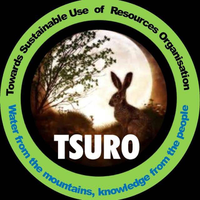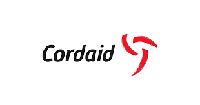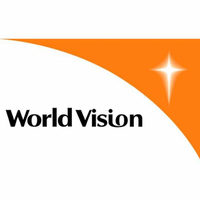TERMS OF REFERENCE FOR BASELINE SURVEY FOR CLIMATE CHANGE RESPONSE AND MITIGATION, SUSTAINABLE AGRICULTURE, FOOD SECURITY, AND VALUE ADDITION TO IMPROVE LIVELIHOODS OF RUSITU COMMUNITIES PROJECT
Tenders
- Tsuro Trust
- Expires 17 Apr 2024
- Chimanimani
- Contractor
Job Description
1.0 DEMOGRAPHIC INFORMATION
• Quantifiable indicators number of direct and indirect beneficiaries (sex segregated
data).
• Number of youths going to participate (sex segregated data)
• Number of vulnerable people like widows, orphans Persons with Disabilities
participating in the project (sex segregated)
• Literacy levels of project members
2.0 BIODIVERSITY
• Indicate natural resources currently being utilized and status of conservation.
• Indicate the type and number of agrobiodiversity products to be produced at the
project.
• Identify fish farming status and potential
• Conduct an assessment/Inventory of current conservation activities by establishing
who is doing the work, where the activities are being carried out and results achieved
that need replication or scaling up
• Assess level of public awareness on key environmental issues including veld fires,
climate change, deforestation etc
• Identify IKS being used in conservation of resources and existence of local level by
laws
• Identify related partnerships in conserving biodiversity and levels of collaboration
(stakeholder inventory)
3.0 CLIMATE CHANGE MITIGATION AND ADAPTATION
• Indicate the area that the project is going to address under the following list and
provide details on the selected area:
✓ Renewable energy technologies – specify number and type of
technology promoted
✓ Conservation/ enhancement of carbon stocks
• In terms of carbon proofing, indicate number of number and type of trees to be
planted.
• Are there climate change disasters/shocks experienced in the area?
• What strategies are being used to respond to this shocks/build resilience in the
community?
5.0 AGRICULTURAL PRODUCTION, VALUE ADDITION AND LIVELOODS
ENHANCEMENT
• Identify cropping activities in the targeted areas (key crops, production levels)
including irrigation schemes/group activities. Put quantifiable indicators in kgs on
levels of production for each crop per season per individual or group before project
intervention.
• Identify current Natural Resource based enterprise activities and opportunities.
• Assess the level of income per each enterprise per month or per season.
• Identify and assess value addition potential for each product.
• Conduct market analysis and value chain studies for each product. Are there post-
harvest losses.
• Assess the knowledge base for production, processing and marketing and
identify training needs.
• Identify and document local traditional knowledge for processing.
• Food Systems and Health Risks – what are the cropping systems being used and do
they pose risk to the environment and people?
• What are different types of livestock in the project area? How is the grazing land/area
being managed?
6.0 CAPACITY DEVELOPMENT
• Has a capacity needs assessment been conducted for the project to identify the areas
that the project needs to be trained on.
• Do the project members and beneficiaries have the requisite skills for implanting the
project?
• Which areas need training and who is going to offer training?
• Is there going to be development of knowledge materials. If yes indicate the materials to
be developed.
• From the list below, select strategies going to be undertaken by project in the area of
capacity building and provide details for selected areas:
✓ Going to strengthen grantee networks
✓ Peer to peer knowledge exchanges
✓ To organize training within project grants on specific technical issues
✓ Connect grantees with government services
✓ Connect grantees with NGOs/INGOs
✓ Connect grantees with the academia or research centres
✓ Connect grantees with development agencies/practitioners
✓ Connect grantees with private sector companies.
7.0 SOCIAL INCLUSION
i) GENDER
• Is the project led by a woman (e.g., had a female project coordinator/manager)?
• Does the project have gender policy, strategy and action plan?
• Do women have access to natural resources (forests, land and other resources) in
terms of use and control of the resources?
• Indicate the patterns of power and decision making in the project?
• Indicate number of women in leadership positions and in the project committee
• What are the needs of men, women and youth? How are the needs for women being
addressed by project? What is the percentage of funds in the project directed towards
addressing the needs of women?
• Indicate Gender Roles, Responsibilities/Division of Labour and Time Use. Are there
gender specific activities, outputs, outcomes, and disaggregated indicators in project
design?
• Are women involved in the whole value chain?
• How are the benefits in the project shared between men, women, youth and PWDs.
• Do women in the project have skills and capacity? If there are gaps are there specific
ways of addressing this in the project (Gender Training Needs Analysis)
• Which mechanisms is the project going to use to ensure women’s empowerment and
gender equality during the reporting period
• Is the project going to produce knowledge and guidance materials on how to
mainstream gender in community-based projects?
• Is the project going to partner with gender/women’s organization in the country?
• Is the project going to support networking at the national level and global level with
other gender platforms?
ii) YOUTH
• How many youths are participating in the project (sex segregated)
• What are the needs of youth and how are these addressed by project? What is the
percentage of funds in the project directed towards addressing the needs of youth.
• Are youth part of the leadership structures
iii) PERSONS WITH DISABILITIES (PWD)
• How many persons with disabilities are participating in the project (sex
segregated)
• What are the needs of PWDs and how are these addressed by project? What is the
percentage of funds in the project directed towards addressing the needs of PWDs
• What different forms of disabilities are being addressed by the project?
• Indicate the strategies being done to assist PWDs to effectively participate in
terms of reasonable accommodation.
• Are PWDs part of the leadership structures?
8.0 GIS MAPPING
Produce the following:
• Map indicating project location
• Map showing geographical/biophysical features of the project area
Duties and Responsibilities
The required outputs of this consultancy will be as follows:
i. An inception report outlining the approach/methodology, execution
programme/timetable, budget and proposed outline of the reports. This report shall
be submitted for review and approval by TSURO and UNDP-GEFSGP after the
signature of the contract before commencement of the work.
ii. Data collection tools which shall be submitted within two days after acceptance of the
methodology for review and approval by TSURO and UNDP-GEFSGP.
iii. Draft survey report shall be submitted within 10 days after completion of the field work
and shall be accompanied by the raw data as collected by the data collection tools.
iv. The final report shall be submitted within 7 days after the submission of the draft
report and shall incorporate TSURO, UNDP-GEFSGP, and stakeholders’ inputs.
v. The report outline will be agreed with TSURO. The reports submitted by the consultant
shall live up to the quality standards provided by TSURO and UNDP- GEFSGP.
vi. Need to submit the GEFSGP List of Indicators under Annex 1 together with the
baseline report.
The successful team will work under direct supervision by the TSURO management team with
support from the UNDP-GEFSGP office.
Qualifications and Experience
This consultancy requires an Institution or a team of consultants. The team shall consist of the
following:
(i) Team leader
The consultancy will be led by a Team Leader with a minimum master’s degree in any of the
following Agriculture Economics, Environment, Ecology, Forestry, Natural Resources
Management, or development studies.
(ii) A Livelihoods, gender and disability expert – With a minimum of university
degree in Rural Development, Development Studies, Business Management,
Community Development or a related area.
(iii) A Mapping Specialist/GIS – With a minimum of bachelor’s degree in GIS,
Geography, or related field, and relevant GIS training.
How to Apply
If you are convinced you meet the above qualifications and requirements, please send to the
address below your summarized C.V. (maximum three pages) which should outline your
qualifications and relevant experience and a maximum one-page analysis highlighting your
understanding of the work and the proposed methodology you will apply in delivering the
intended objectives that is inclusive of the financial bid.
Address for Application:
The expression of interest should be sent to: info@tsurotrust.org cc
Rosemary Mudzingwa
Knowledge Management Manager
rosemary@tsurotrust.org
+263773875304
Tafadzwa Chipato
Project Coordinator
tafadzwa@tsurotrust.org
+263773004535
Adeline Banhwa
Administrator
adelin@tsurotrust.org
+263773630598




